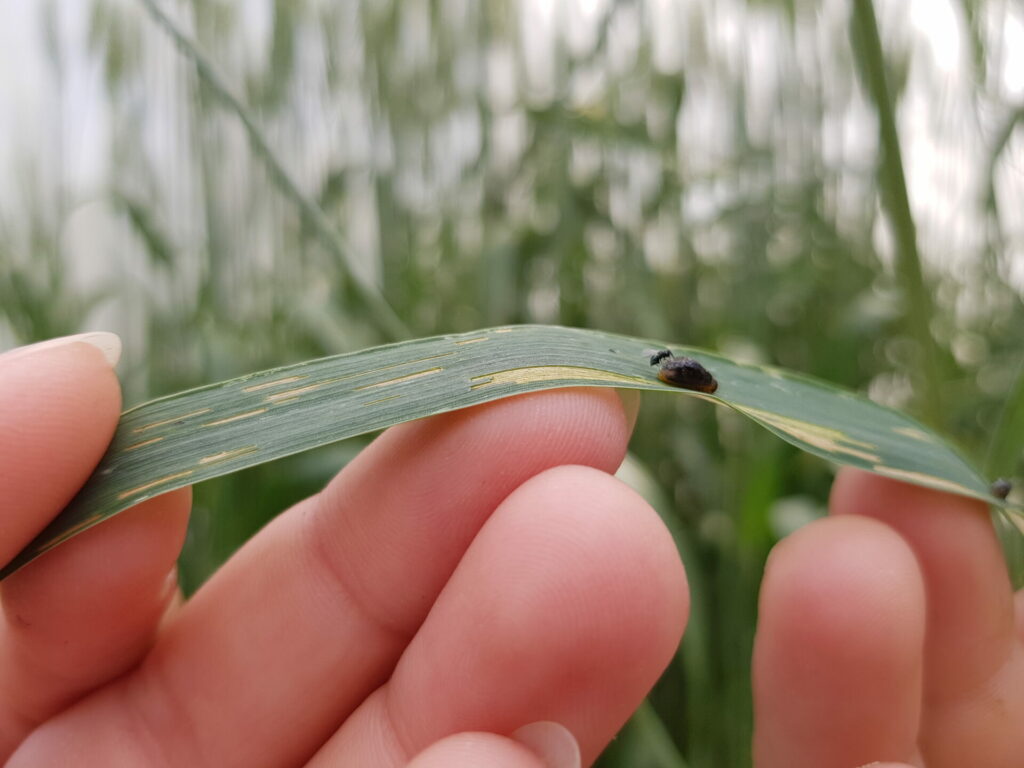Cereal leaf beetle larvae eat the upper surface of leaves, leaving behind ‘windows’ of missing foliage that can look like white or yellow stripes on the leaves. Wheat is the preferred host of adult and larval cereal leaf beetle, but this pest will also consume barley, oats, rye, millet, wild oats, and other grasses.

Feeding damage caused by adult cereal leaf beetle does not typically result in yield loss to the crop. Rather, feeding damage caused by the larvae, especially to the flag leaf, results in lost yield and reduced crop quality.
In western Canada researchers expected cereal leaf beetle to become a widespread and problematic pest. This prediction has thankfully not yet come true, probably mostly due to the efficacy of an introduced parasitoid, Tetrastichus julis. Learn more about the parasitoid in one of the 2023 Insect of the Week posts!
Information about the biology of cereal leaf beetle and how to monitor for it was published by the Government of Alberta. You can also learn more by visiting the cereal leaf beetle page from the Field Crop and Forage Pests and their Natural Enemies in Western Canada: Identification and Management field guide (available in French here).
